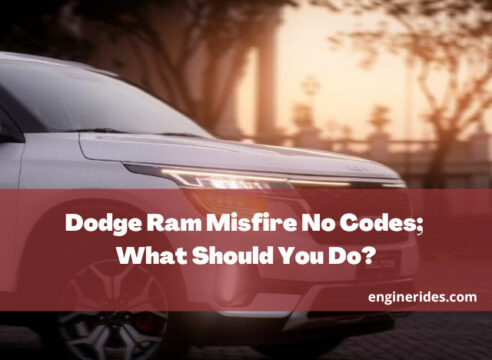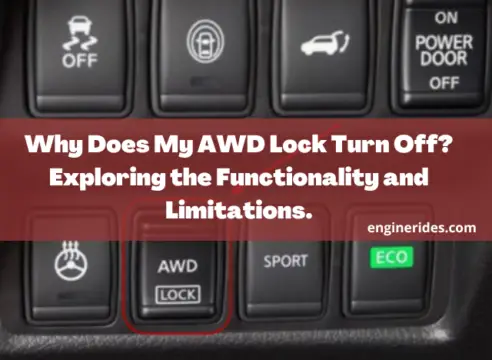Have you ever wondered why your car’s oil pressure gauge goes down when your car is idling? It’s common, and I know it can make you scratch your head. In this article, I’ll break it down for you in easy terms. We’ll explore why your car’s engine might not be thrilled when it’s not moving and what you can do about it. So, let’s get to the bottom of this issue and get your engine running smoothly, even at a standstill!
So I invite you to read this guide until the end without missing out on any point because what we discuss in this content will be the most valuable guide you’ve ever found on the web.
At the same time, if you have any other problems related to this, do not hesitate to contact us through comments or our contact form. One of our mechanical engineers will be there to assist you…
Table of Contents
What should oil pressure be at idle?

The normal oil pressure at idle varies across different vehicles due to factors like engine design, age, and operating conditions.
However, a general guideline for cars is an idle oil pressure range of approximately 20 to 30 PSI (pounds per square inch), while for trucks, it typically falls within the 25 to 35 PSI range. Monitoring oil pressure is vital as it reflects the engine’s lubrication system’s effectiveness.
Why does the oil pressure is low when idle?
With my years of experience dealing with engines, the most likely cause for low oil pressure at idle is low oil. This is because the car produces less power when it is idle than when it is running or throttling, and therefore, the oil pressure will be shown as normal when running and low when idle.
The first thing you should do is park the vehicle, leave it to cool the engine, and check for the engine oil level. If the oil level is low, add more oil, and your problem will be solved.
But this is not the only possible cause for this problem, and now, let’s take a look at the other causes one by one.
Worn Engine Bearings
Over time, the engine’s main and connecting rod bearings can wear out due to normal use or insufficient maintenance. As these bearings wear down, they create gaps that allow oil to escape, decreasing oil pressure, especially at idle.
How to fix worn engine bearings?
Repairing worn engine bearings involves an extensive engine overhaul. This typically requires removing the engine from the vehicle, disassembling it, and replacing the damaged bearings.
It’s a complex and labor-intensive job that a qualified mechanic should perform. Regular oil changes and using high-quality oil can help prolong the life of engine bearings.
Oil Viscosity
Using the wrong type of engine oil with a lower viscosity than recommended for your engine can lead to low oil pressure at idle. Viscosity refers to the oil’s thickness, and the wrong oil may not provide sufficient lubrication and pressure.
How to fix oil viscosity?
Always use the manufacturer-recommended oil for your vehicle. Refer to your car’s owner’s manual for the correct oil specifications.
During oil changes, ensure that the proper oil viscosity is used. Flushing and refilling the engine with the correct oil type may be necessary if the wrong oil has been used.
Faulty Oil Pump
The oil pump is responsible for circulating oil throughout the engine. A malfunctioning oil pump or worn-out components can hinder its ability to generate sufficient oil pressure, especially at idle.
How to fix Faulty Oil Pump?
If you suspect a faulty oil pump, it should be replaced promptly by a qualified mechanic. This involves removing the oil pan and sometimes other components to access the oil pump.
Regular maintenance, including oil changes, can help prolong the life of the oil pump and reduce the likelihood of issues.
Clogged Oil Filter
A clogged or dirty oil filter can restrict the flow of oil through the engine, particularly at idle when the oil demand is lower. This restriction can result in low oil pressure.
How to fix Clogged Oil Filter?
To address a clogged oil filter, simply replace it with a new one during your regular oil change. It’s a relatively easy and inexpensive fix. Regularly changing the oil filter as recommended by your vehicle’s maintenance schedule will prevent this issue from occurring.
Addressing these issues promptly and following a regular maintenance schedule can help ensure that your engine maintains proper oil pressure, even at idle. Regular oil changes, using the correct oil type, and keeping an eye on warning signs such as low oil pressure on the dashboard are essential for engine health and longevity.
when To Use Plus And Minus On Gear Shift? All You need To Know
enginerides.com
How to increase oil pressure at idle?

To increase oil pressure at idle, you can take several important steps. First and foremost, ensure your engine has the correct amount of oil by regularly checking the oil level on the dipstick and topping it up as needed to reach the recommended level. Low oil levels can directly result in reduced oil pressure, especially at idle.
Additionally, using the right type of engine oil with the manufacturer-recommended viscosity rating is crucial. If your engine currently has oil with a lower viscosity than recommended, consider switching to a higher viscosity oil. Thicker oil can enhance oil pressure, particularly at lower engine speeds during idling.
Regularly changing the oil filter is another key factor in maintaining healthy oil pressure. A clogged or dirty oil filter can impede oil flow, causing a drop in pressure. Replacing the oil filter as part of your routine oil change can help maintain proper oil pressure at idle.
By following these steps and keeping up with regular maintenance, you can increase oil pressure at idle and ensure that your engine’s components receive the necessary lubrication and protection.
What to do when “oil pressure low stop engine” alert comes, but oil is full?
Suppose your vehicle’s “oil pressure low stop engine” warning light comes on. In that case, even when the oil level is at the appropriate level, it’s essential to take immediate action to prevent potential engine damage. Here are steps to follow in such a situation:
Turn Off the Engine: Immediately pull over to a safe location and turn off the engine. Running the engine with low oil pressure can cause severe damage.
Check the Oil Level: While the oil level may appear full, it’s essential to double-check it to ensure accuracy. Use the dipstick to verify the oil level; make sure the vehicle is parked on level ground and wait a few moments for the oil to settle before checking.
Inspect for Leaks: Look under the vehicle for any signs of oil leaks. Even a small leak can lead to a drop in oil pressure.
Do Not Drive: Do not attempt to drive the vehicle until you’ve identified and resolved the issue. Driving with low oil pressure can result in catastrophic engine damage.
Call for Assistance: If you cannot identify the problem or are unsure how to proceed, it’s best to call for a tow truck or roadside assistance. Explain the situation to them and have the vehicle inspected by a qualified mechanic.
Common reasons for a false “oil pressure low” warning light when the oil level is full include a faulty oil pressure sensor or gauge. A mechanic can diagnose and repair the issue to ensure your vehicle’s safety and proper function.
Is it OK to drive with low oil pressure?

Driving with low oil pressure is not advisable and can lead to severe engine damage. Oil is essential for lubricating engine components and dissipating heat. Low oil pressure indicates that there isn’t enough oil circulating in the engine to adequately lubricate and cool critical parts, such as the bearings, pistons, and camshaft.
Continued operation under these conditions can result in increased friction, overheating, and accelerated wear on these components. This may eventually lead to engine failure, costly repairs, or even the need for a complete engine replacement. If your vehicle’s oil pressure warning light comes on, it’s crucial to pull over, turn off the engine, and address the issue promptly to prevent further damage.
Oil Stop Leak Pros And Cons; All Explained
enginerides.com







One Comment